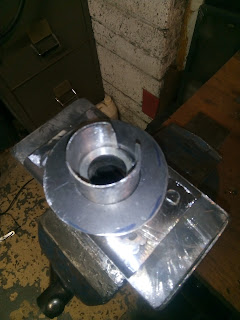One of the things I really love about building this cyclekart is that I learn about things which I start out knowing nothing about at all, and today it is the naming of the parts of my main drive chain. And for that I consulted a site recommended by Stefan Nahajski, the Chair of Cyclekarts GB: the Cut Price Racing Guide.
 |
| picture from Renold.com |
 |
| picture from hammerinhandcycles.com |
This afternoon I measured the circuit my chain will travel round - when stretched around the driving and driven sprocket - in mm. Then, you just divide this by the pitch of your chain, which in the case of my 420H chain will be 12.7mm and that gives a total number of 92 links, which is what I need to order, bearing in mind that one of them will be a joining link.




.jpg)

















.jpg)


.jpg)







.jpg)



















